Artefact 236
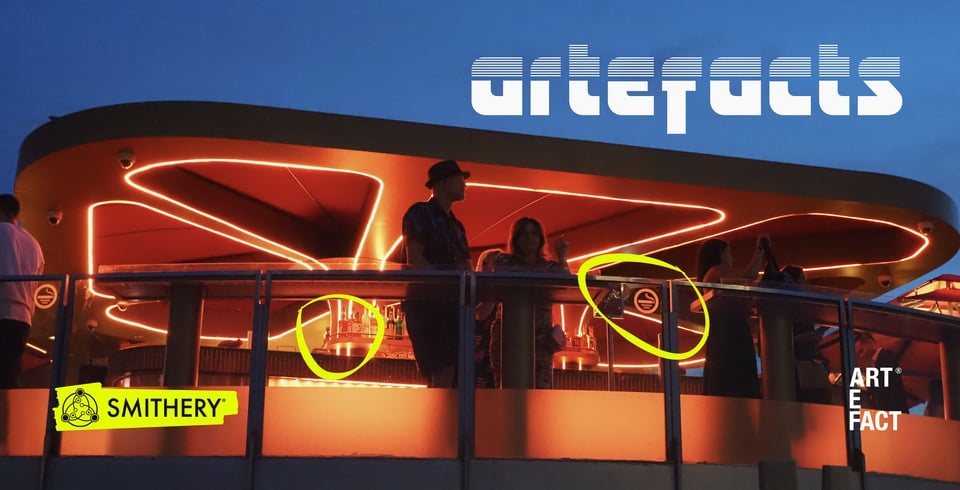
What it is, and how it is made
Well hello again, and a Happy New Year
And in particular, hello to new friends, hundreds of whom are now here for the first time after buying the Regenerative Design Field Kit.
To welcome the new folks in, it feels right to start with some reflection on the tool kit. Then, I'm going to offer a quick preview of some musings from the Smithery side of things heading into 2024.
If I have one resolution this year, it will be to write more; to reflect, to discover, to create. It feels like the newsletter is the place to do this.
Let's get started.
1.1 Out in the wild
All the first editions of the Regenerative Design Field Kits are out there in the wild.
Aaround the world, the viewers are being pointed at the new, the strange, the familiar, the unexamined. Then the question cards are opening up new, deeper conversations about the world around us, and what we need to do next.
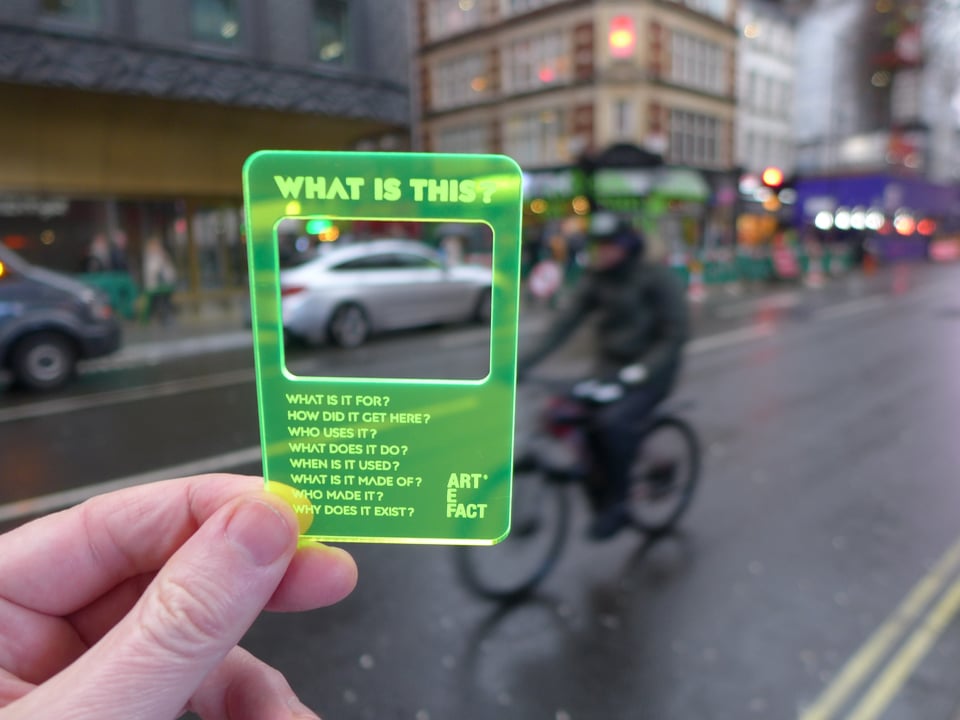
In the last week or so before the holidays, I started a series of conversations with people about how they are using them, where they are useful, and how they could be better.
OPEN CALL: If you want to share how you have used the kit, please reply to this email.
The second edition of the field kit is heading to print now (you can preorder here) in time for some workshops in January, and then we are hoping to make a dual language version for a special event in Lisbon in March.
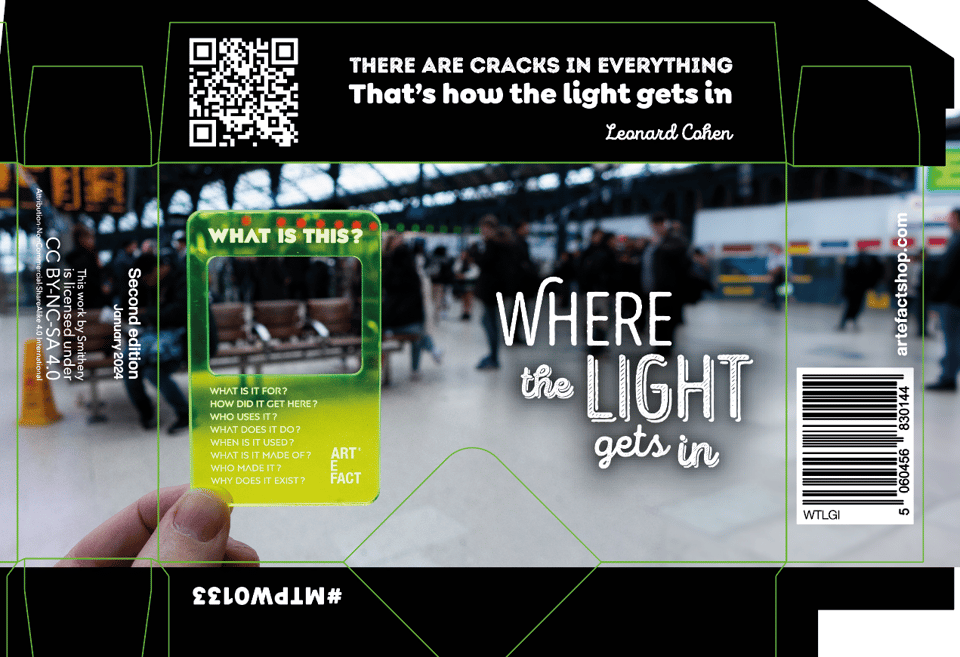
The new box will feature Brighton station on the cover, and there will be some minor tweaks on a few cards.
This continual iteration will always help in a discovery process like this. The field kit is an exploratory device for both the user and the maker, a cultural probe – a Culturematic, as Grant would have it – to make our future work more impactful, more likely to make change happen and stick.
For instance, I'm working up a Regenerative Triangulation Workshop as a next step. Once you have used the field kit, what sort of change can you make in the short term for long-term regenerative effects? Running a few of these workshops will no doubt help uncover new questions, phrasings, and approaches that become part of future iterations.
Therefore, the infrastructure behind the field kit needs to be designed to easily allow the kit to grow, evolve, flourish. It needs to be developed to work as frequent small runs, rather than one large run, so that it stays relevant as the world changes.
1.2 Environmental, Social, Economic
I have been thinking carefully about the manufacture process. How it is made is an intrinsic part of what it is, and what it is trying to do; a 'Regenerative Design Field Kit' must therefore always try and be regenerative in and of itself, surely?
That means, as back of all the cards shows, thinking about regeneration environmentally, socially and economically.
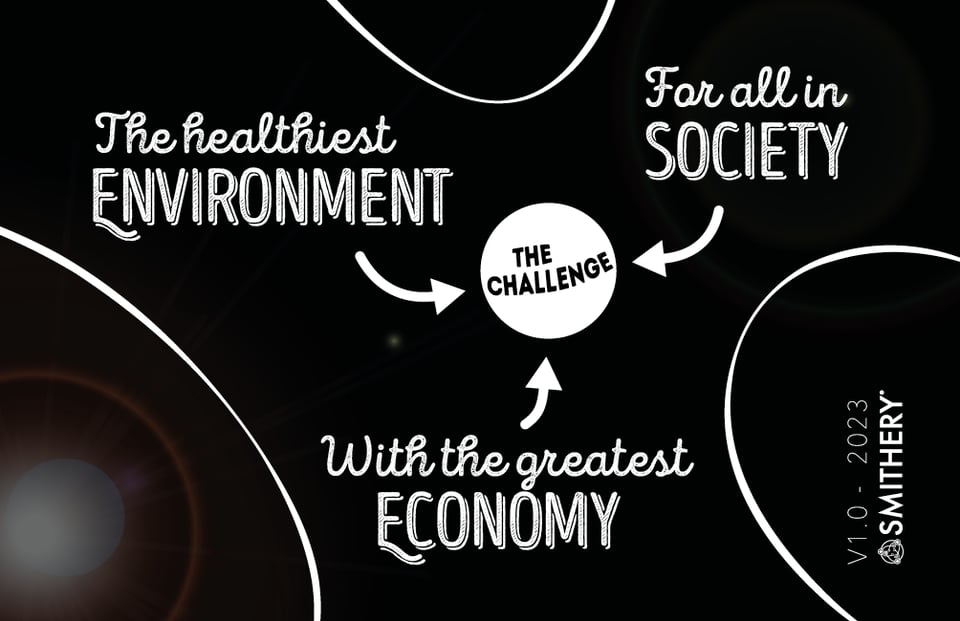
Not long after the kit was launched, I was wandering around The Design Museum in London and saw this Terence Conran quote below.
Knowing how something is made is something we have always made central to our Artefact Cards products, but I feel the time is right to double down on this.
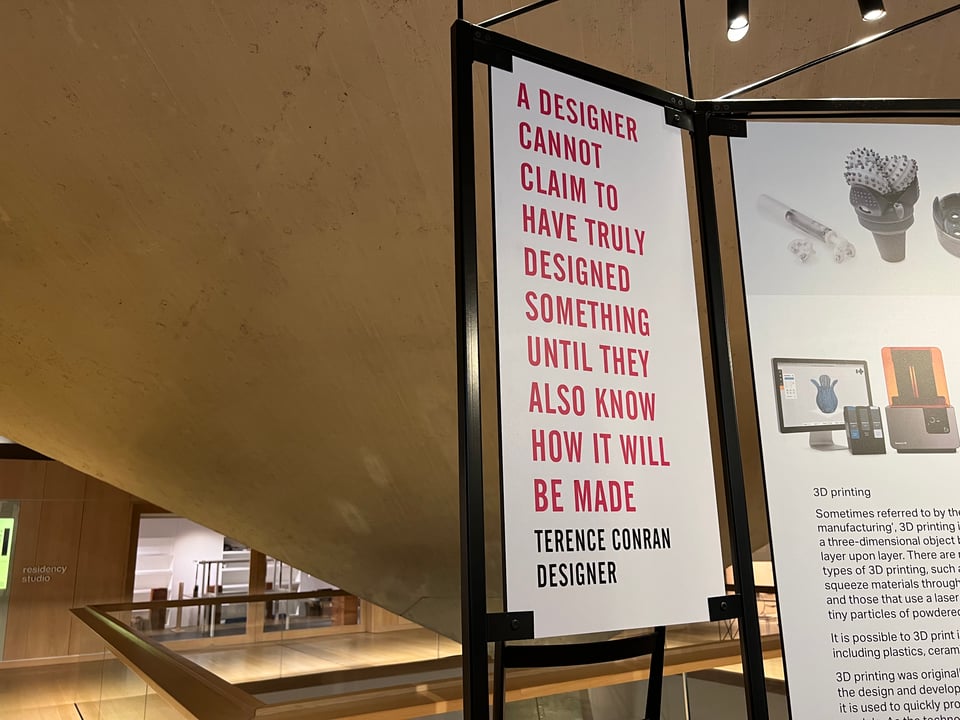
It is very easy to send some designs overseas to get something back which is very cheap. Especially in the card domain.
Yet you have no control on the social aspects of how it impacts the people who work on it, and the communities they are part of. It is fairly hard to trace the raw materials that go into it, and the exact processes and substances used in its creation.
Even if you can do that fairly overseas, you're faced with the impact of shipping lots of fairly heavy card-based units halfway around the world before they even make it to the shop. TThat is a hard footprint to resolve for a product, no matter how well you make it.
Economically, it might make sense to make things abroad. But if you force yourself to consider the economic, the environmental and the social together, not so much.
As part of the regular Cardstock meet-up (a monthly online discussion, and a Signal group), we all see lots of different card decks.
I've found myself paying particular attention to where other card decks are made. These choices are an intrinsic part of the process by whoever designed them, and for me the manufacture of a thing is an increasingly important aspect to consider. You can make things well; if you have chosen not to, that speaks volumes.
To that end, I have decided that we should make our own process even more open wherever we can, to show others what is possible.
1.3 Making the local visible
Most of the Field Kits (e.g. all the box and cards) are made at the Axminster Printing Company, by Keith and his team. Which is where we have always made them, since 2011. Tim Artomatic found Keith on his way through Axminster, which is a good story and one for another day.
The viewers (obliquiscopes, if you will) were made in Cornwall by Cut By Beam using an acrylic glass material called Greencast by Italian manufacturer Madreperla - it is 100% recycled and recyclable, and made using renewable energy.
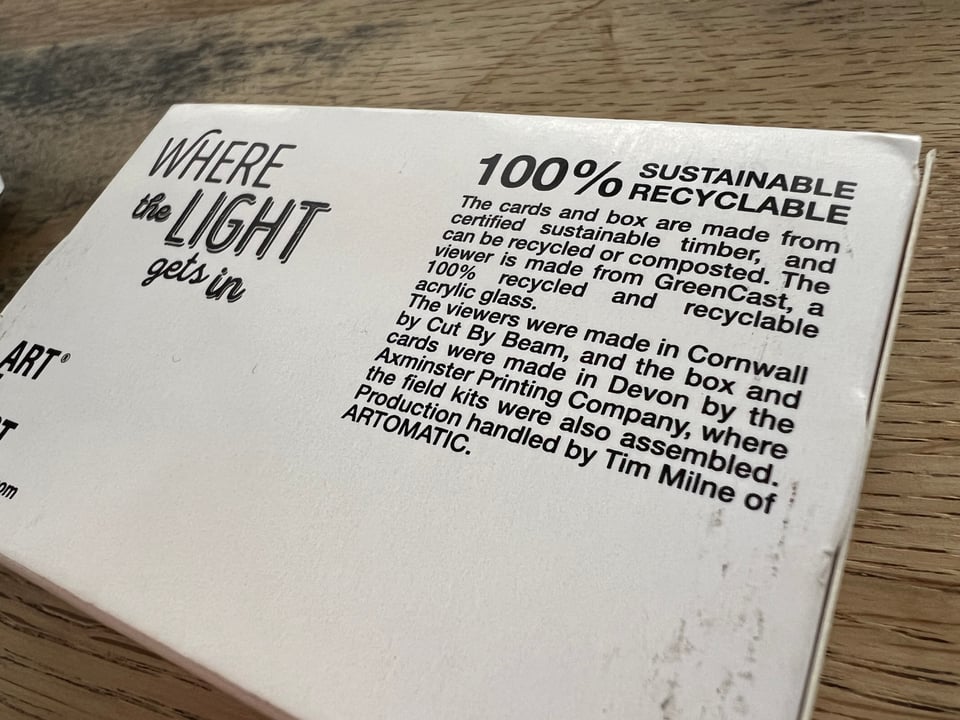
Whilst we have always shared stories on social media and blogs about this sort of thing, this is the first time we have put all of this information on the box.
Going back to the social component of regeneration, I wanted to make the supply chain, and the people and companies inside the kit really visible. It shows what can be made, and with who, and using what.
1.4 Look to the future, look to the past
For future versions, I am now thinking about how the cards themselves are made, and how they might be different in future.
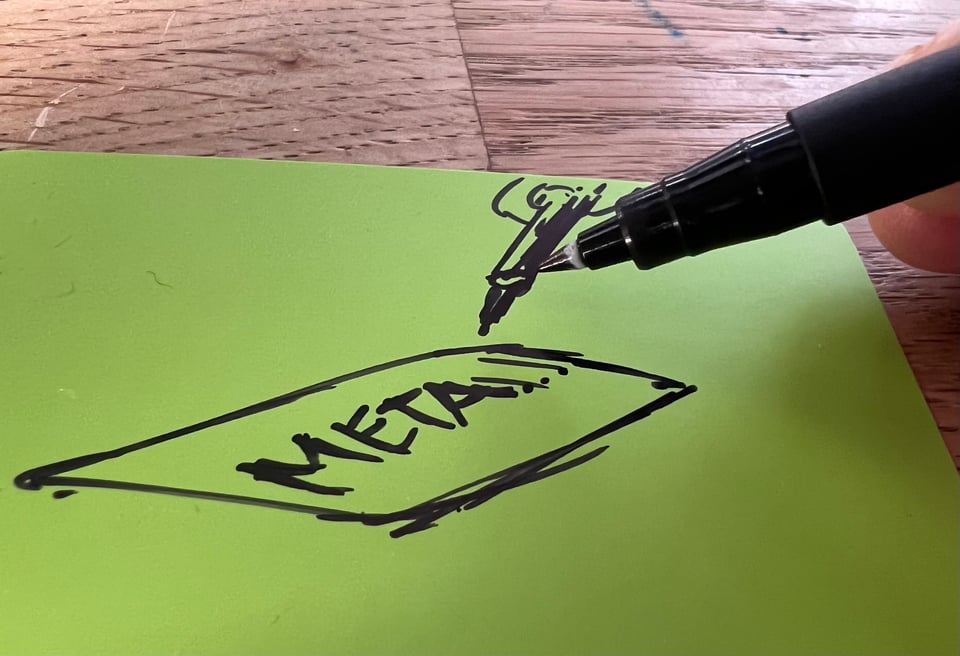
The original Artefact Cards themselves are made for noting and sketching on. They are easy to recycle as there is no plastic in them at all, which is not true for a sizeable majority of cards made in the world today.
Now, there are encouraging signs of this changing nowadays - Ivory (a well-known UK playing card manufacturer) recently took great steps in removing all card-varnishes apart from their eco products - https://www.ivory.co.uk/environment. It would be good to see all plastic finishes disappear.
Even adding an extra eco-friendly layer to a process is still an additional layer. It would make unrecyclable cards recyclable, but if you start with recyclable cards why add more materials and energy to the process?
Rather than just looking to the future, I've decided to look to the past too.
Playing cards are older than plastic. They haven't always been plastic coated. I happen to have an old Bézique set - a family hand-me-down.
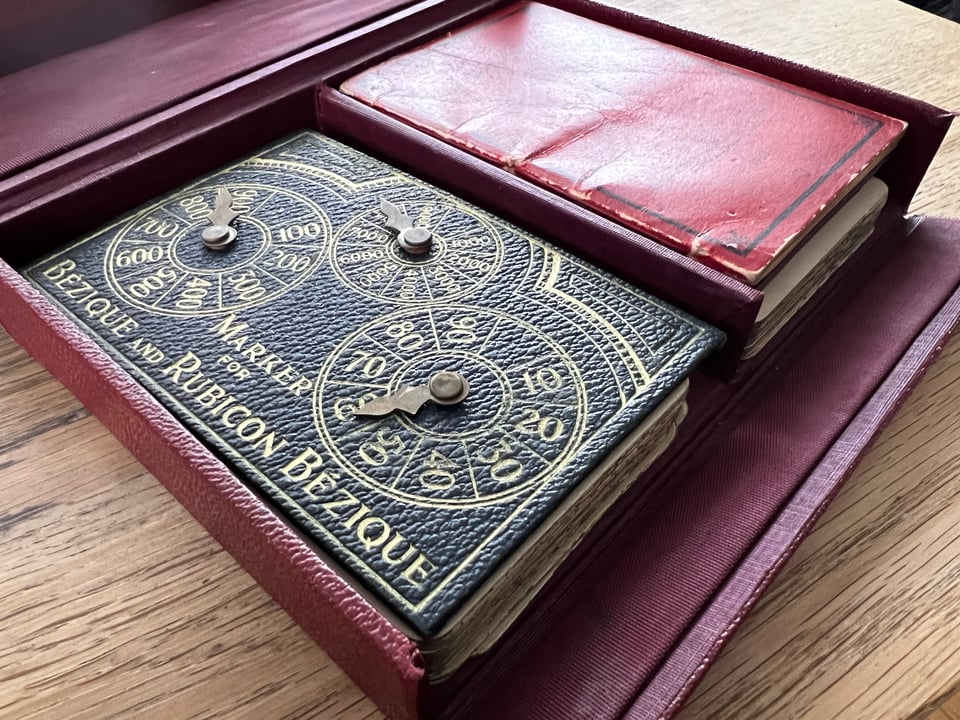
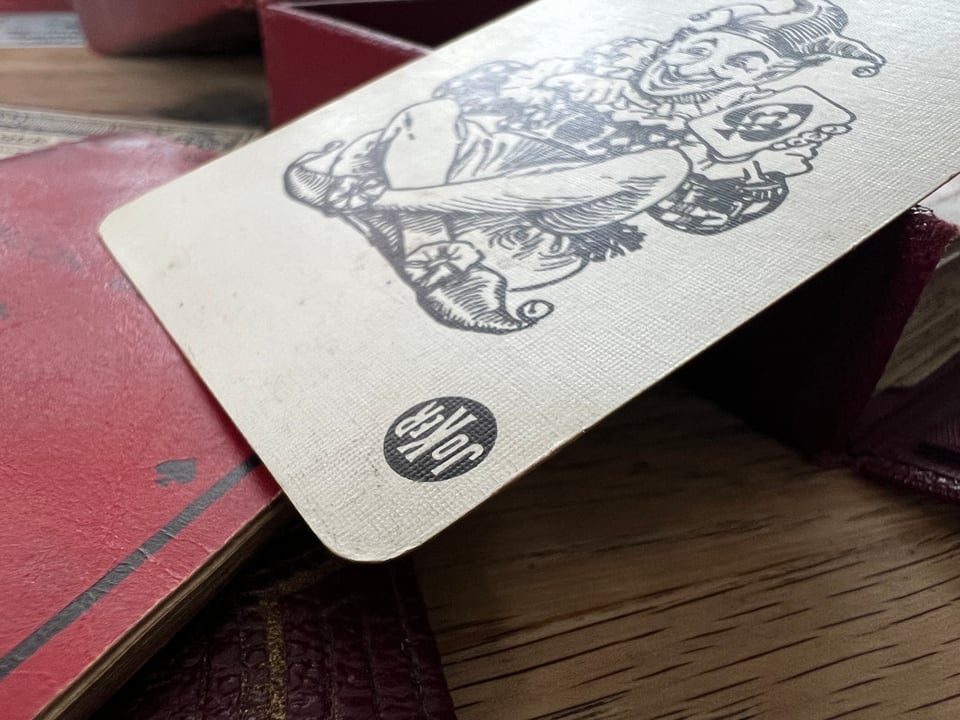
Looking at the cards in detail, they're clearly uncoated, but get their 'cardness' I think from the paper stock instead.
I'm going to learn about how cards used to be made over the next few months, and work out if any of those processes are a good way of making new sets of printed cards.
The extra dimension within this is the Regenerative one; it is better environmentally, so how does it also match up to my own expectations in the social and economic regards?
2.1 Reviving 'Three Projects'
This brings us back to the Smithery side of things. I have decided to start doing the annual three projects again.
To recap; for the first five years of Smithery, I'd set out three projects to work on alongside our client work, to push the boundaries of thinking and doing in a more formalised way.
The last one was in 2016, and covered these three projects:
i. What Is A Strategic Design Unit?
WBB (Why Bloody Bother?) – In these first fresh weeks of 2016, inhabiting a new way of seeing what we do is something to test out. Then with further reading and reflection, we’ll be experimenting and investigating what it takes to be a “Strategic Design Unit”.
WDG (Woolly, Doable Goal) – Working out what Strategic Design means for us, how we describe ‘strategic design units’ helpfully for others, and creating an artefact of our investigations (writing a guide on how we get on to publish, a white paper, or something). The best articulation we can create, available to develop and build on through creative commons, that asks the least from others and ourselves in order to take the most from it.
(2024 note: I have written a little about this, however it turned into a useful way to describe our work in the first few moments of a talk or a new client introduction.)
ii. How Do You Use The Universal Agility Map?
WBB - We have found it really useful. We think other people will find it really useful. How we communicate the value we have found in that will be a good challenge for us (we have spent a year on it, surely it doesn’t take that long to learn), and beneficial for others.
WDG – Work out a way to teach it to people. Then teach it in person, at places where I teach already, like IED Barcelona & Google Squared, and in new places too. And, just maybe, create an artefact of the method too, so that people can teach themselves.
(2024 note: this turned into Zenko Mapping)
iii. Where can you see Perpetual Spatial Ranges at work?
WBB (Why Bloody Bother?) – From the 2014 work based on the Stewart Brand shearing layers, it has been really apparent that the spaces in which people work are part of the domain of trying to solve the problems we are asked to. This is the year to get to grips with that properly.
WDG (Woolly, Doable Goal) – Find a place to show people what we mean by Perpetual Spatial Ranges, whether it is a place we work in, or someone else works in, or one we have designed for someone else for a specific purpose. Then, perhaps, run a tour of the space…?
(2024 note: This project... fell by the wayside. But I really like it in the light of 2024, so may revisit and mull it over again)
Reflecting on all three, and others from the years before, I realise now that the experience of writing and exploring these topics at the beginning of the year has been a really useful personal practice.
Committing to this work publicly helped me focus on it, and also let me deprioritise things which weren't part of these projects after client projects were done.
To that end, I feel I would welcome this discipline this year, and so it is time to bring back Three Projects.
2.2 A preview of Three Projects for 2024
I will follow up this newsletter with another fairly soon, but I know roughly what they will be...
1. Twelve Shelves
I have had a long and detailed relationship with building up the Smithery library over the last 13 years or so. Basically, I believe that a library is everything that is between the covers but not on the pages. Essentially, it is the relationships between books, and where you put then, that matters.
I spent time over the holidays going through the library in detail, and rearranging it into a clean twelve shelves of related topics.
Rather than set an precise reading goal of "52 books" or whatever, instead I am going to read from one shelf every month.
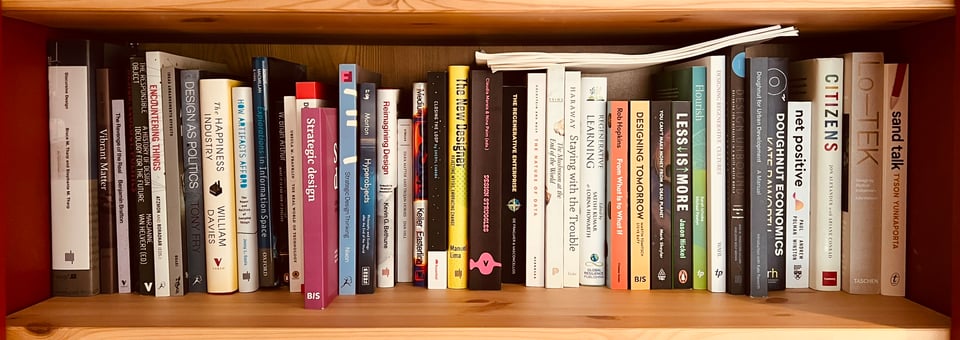
2. What is Strategic Design?
Yes, it is revisiting the topic from 2016, but I really do think the time is right to consider what is meant by this.
Not just in written, single perspective form, but rather in a discussion-based, limited series like a podcast, or even a series of films.
3. The Steps Collective
Finally, I became a fellow of The RSA last year, largely on the back of their new Design For Life mission and its focus on regenerative forms of design, futures, and ways of doing business. Shortly after, Lizzie Shupak invited me to do a talk on the steps at The RSA as part of London Climate Action Week, and then in November the two of us plus Dr Rob Phillips and Andy Thornton explored more Questions about Questions in this territory.
We have decided to formalise this collaboration into something called The Steps Collective; Show The Easy Place to Start. We will host twelve sessions this year with different speakers - sign up here to come along and follow our progress: https://buttondown.email/stepscollective
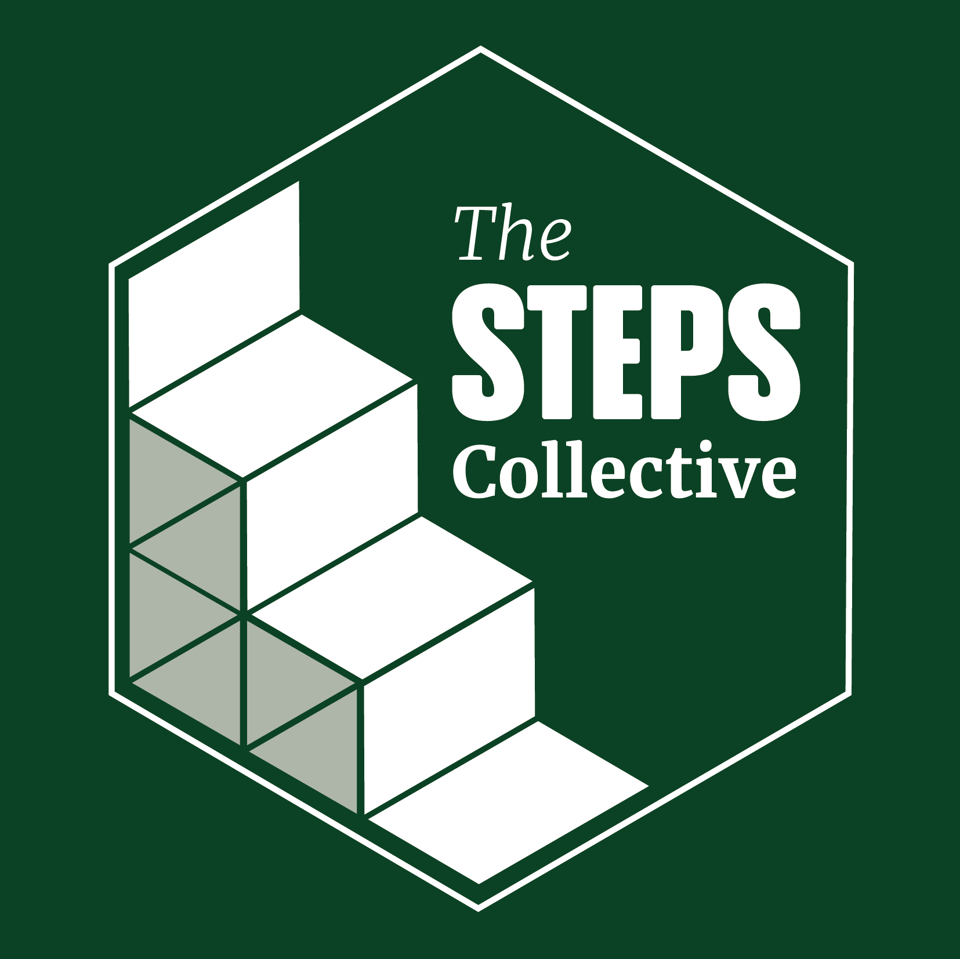
As I say, I will follow up soon with more details on each of these three projects, and again commit in public to our progress this year.
Meanwhile, I hope your year gets off to a great start.
John V Willshire
2/1/2024